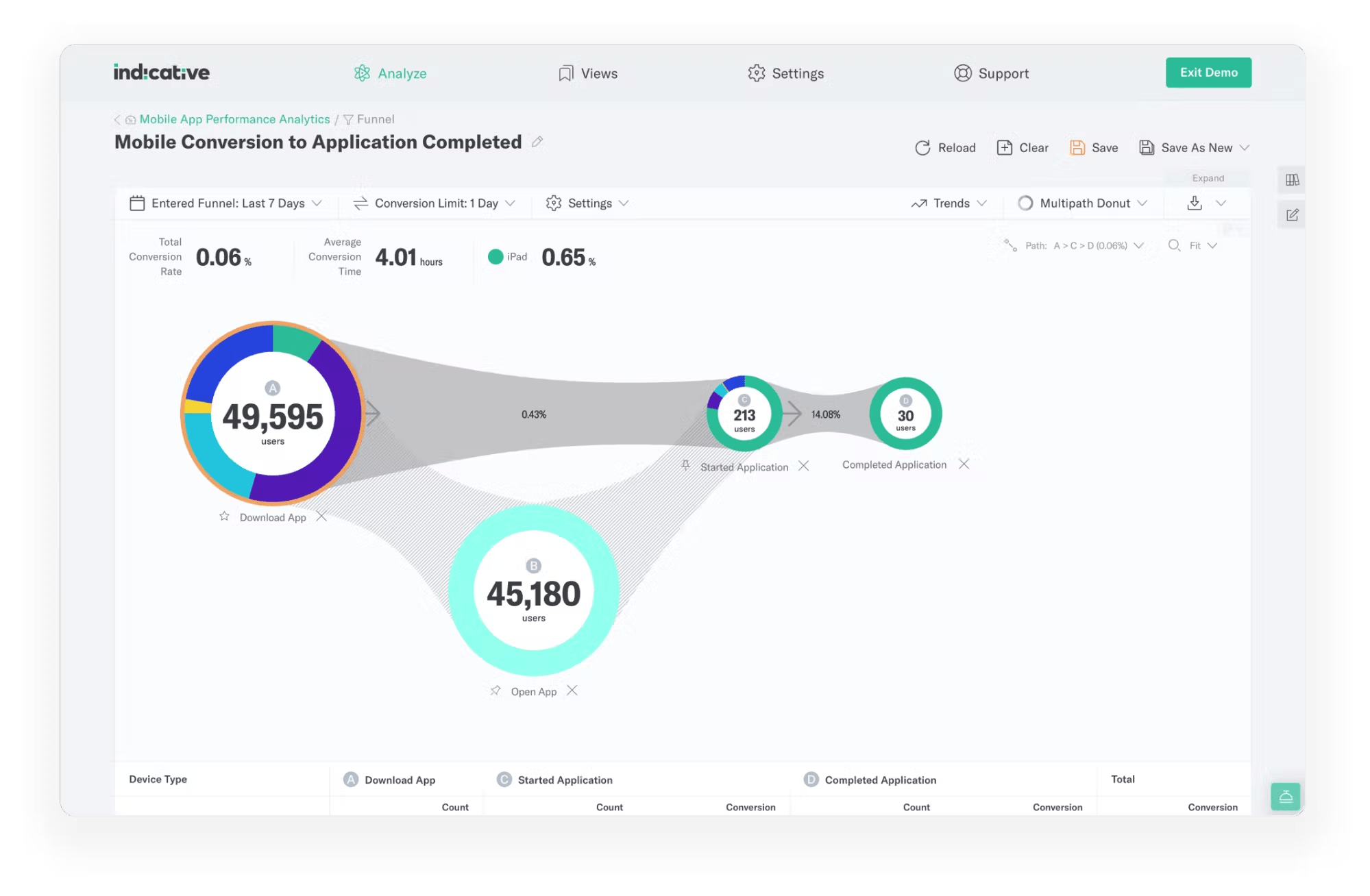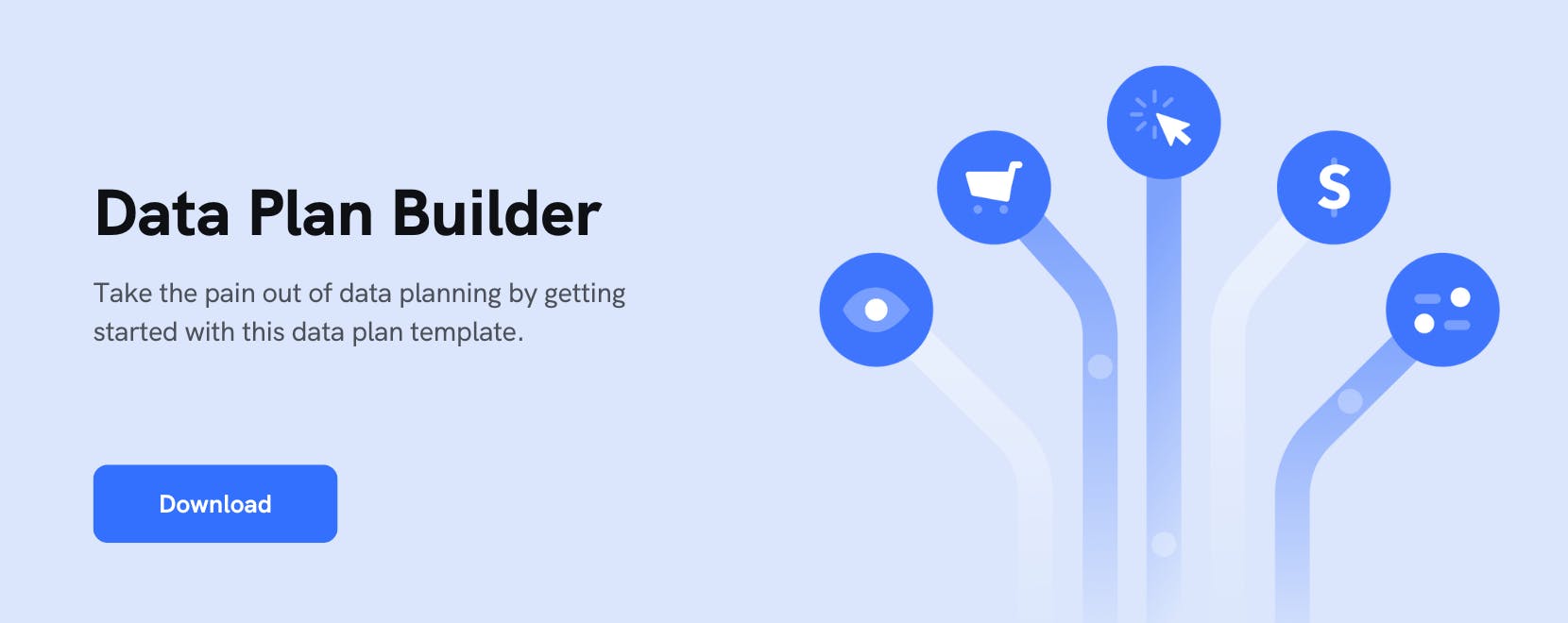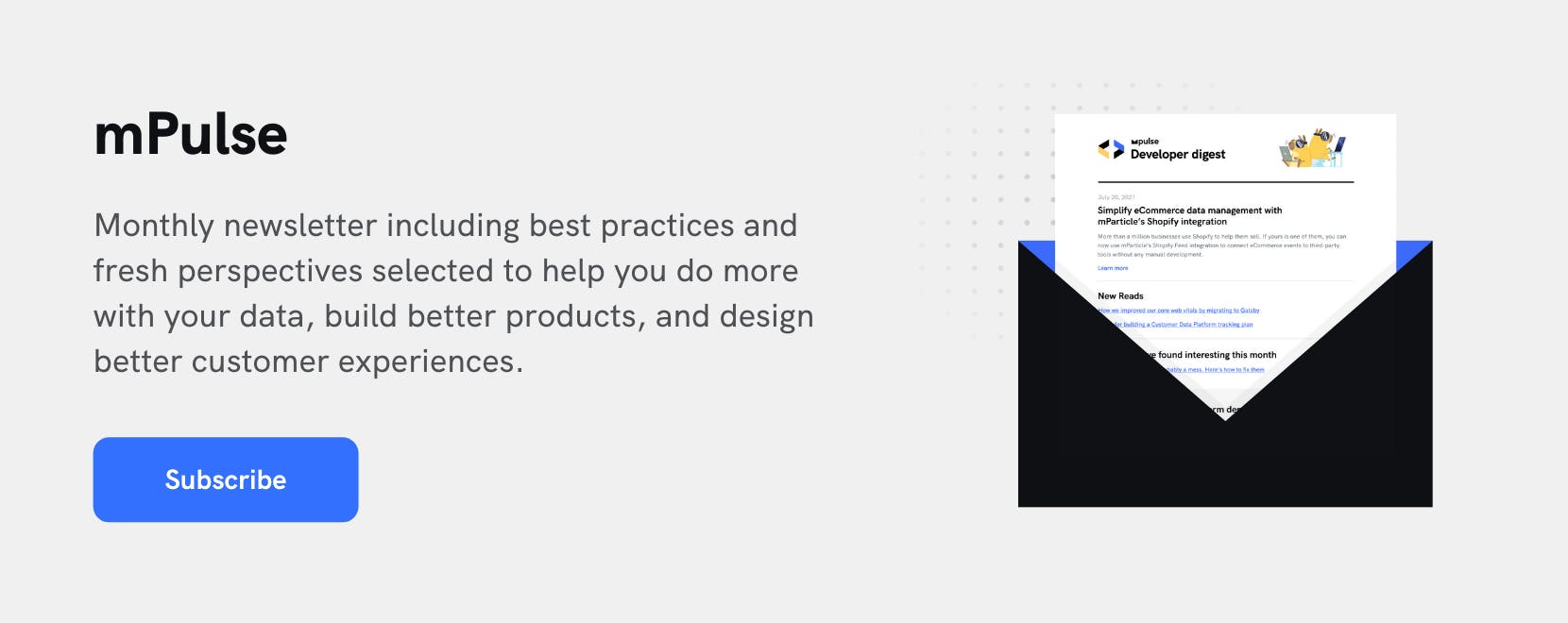Most important data skills for marketers to master in 2023 (spoiler: none of them are SQL)
In today’s data-driven environment, marketers need to be adept at certain data skills and concepts. This doesn’t mean they need to learn SQL and the ins and outs of querying a database, however. Rather, many marketers would be beter served by acquiring skills that augment their core competency: maximizing customer value.

Saying that businesses need data to succeed is like saying human beings need oxygen to survive. From reporting, to personalization, to increasing ad campaigns efficiency, data is a critical resource. Since data makes the business world go round, it stands to reason that marketers, whose success depends heavily on leveraging accurate and up-to-date data, should be adept at working with it.
Some thought leaders have argued that in order for marketers to become self-sufficient, they should invest in technical upskilling and become proficient with SQL. This perspective tends to be more common among those who advocate for a data architecture in which the data warehouse serves as a centralized source of truth. If marketers can query the data warehouse themselves without relying on data engineers, the thinking goes, they can access and activate insights faster, and execute personalization use cases more effectively. This sounds reasonable at first, but on closer examination, the premise raises many questions.
Should marketers learn SQL?
Data warehouses are vast repositories that ingest and store enormous quantities of cross-channel data. Working with a data warehouse efficiently requires a deep understanding of its data architecture. This knowledge takes considerable time to acquire, and needs to be updated as the data warehouse evolves. Additionally, data warehouses include much more than the customer data that would be relevant to marketers—internal employee information, product inventory, and purchase records are all often stored in the data warehouse as well. The variety and scale of the data living in the data warehouse would certainly complicate a marketer’s job when it comes to querying audiences to use in campaigns. Additionally, since marketing typically does not own the data warehouse, the IT org would need to establish standard operating procedures to allow marketers to safely run queries without deleting or rearranging tables, or otherwise causing havoc in this repository.
Gaining the ability to write SQL queries and pull audiences as needed represents an ongoing investment may not be the best use of a marketer’s time––especially one who doesn’t envision moving into a data analytics role. Also, when weighing the potential benefits of marketers learning SQL, one must consider that self-service data infrastructure tools like CDPs can already empower growth teams to get the insights they need without relying on engineers.
Acquiring technical knowledge can undoubtedly help marketers leverage data more effectively, and collaborate more efficiently with their engineering colleagues. Before learning SQL, however, there are other data skills that may better serve marketers, help them meet their objectives, and be an asset to their organization.
Skill area #1: Developing a first-party data strategy
Today’s consumers expect their brand experiences to be personalized across all channels. Sending customers offbase messaging or engaging with them as though they are members of a generic demographic cohort is guaranteed to give them a negative impression of your brand. Delivering privacy-first personalization at scale is a significant challenge, however, as it requires marketers to have access to accurate, complete, and up-to-date first-party data. Recent developments in the data landscape, like the release of Apple’s App Tracking Transparency framework and Google phasing out third-party cookies, place even greater urgency behind developing a robust first-party data strategy for any brand serious about personalization.
Since marketers are on the front lines of developing, executing, and measuring personalization campaigns, they are ideal candidates for leading the development of a company’s first-party data strategy. Marketers have great insight into the business’s goals and which behavioral and user attributes are required to power campaigns that will support those goals. This is why they should actively participate in data planning alongside product managers and engineers, and work to ensure that their team’s personalization objectives are reflected in the technical specifics of the data plan.
To do this, marketers can start by evaluating questions like:
- What additional information about our customer might help us incorporate more personalization in our messaging?
- What additional customer data could help us measure our KPIs?
- What insights would help us create valuable user segments?
- What engagement data might give us more insight into the effectiveness of our messaging?
Marketers should familiarize themselves with a Data Plan that records what customer data is being collected, and ensure that the plan remains up-to-date as data needs change. If no Data Plan exists, they can advocate for creating one. mParticle’s Data Plan template is a quick and easy way to get started.
Skill area #2: Defining an identity strategy
As well as helping to shape the technical specifications around what data to collect and where to collect it, marketers should also have a deep understanding of the concept of identity resolution, and be able to define and advocate for identity strategy that best supports their use cases. An identity strategy is a set of rules that determine how data events performed on separate platforms and in different login states are linked to a common user.
Marketers are uniquely positioned to help inform the data team on the order of priority in which different identifiers should be used to match incoming events to existing profiles. For example, since an email address is more subject to change than a customer ID, the latter should be given a higher priority to form a match whenever it is available. In addition to determining an identity hierarchy, marketers should also look for opportunities to collect high fidelity identifiers, and work with the data team to capture these IDs along the customer journey. If the marketing team runs a campaign that involves offering a coupon, for example, they can choose to require an email address. By capturing this identifier, they can progressively move more customers from a purely anonymous to a known state.
The identity strategy that a company uses will have implications for the completeness and accuracy of customer profiles, and this impacts the marketing team’s ability to use these profiles for different use cases. For the marketing team, more complete and accurate customer profiles means that customer messaging can be based on more context from the user journey. This means customers will receive more accurate and relevant messaging, and this translates to more conversions and higher lifetime value. Additionally, fewer duplicates in the database means that marketing campaigns will be more cost-efficient, since the same users will not be targeted twice.
Skill area #3: Data analysis and hypothesis testing
As discussed above, consumers today have a heightened expectation for personalization. This trend comes as digital products themselves become more complex, and user journeys become more fragmented and challenging to visualize. All this means that it is no longer enough for marketers to measure their success with high-level metrics like pageviews and bounce rates. To truly understand the impact of their campaigns, marketers need to develop data analysis skills and proficiency with platforms that allow them to put these skills into action.
Each time marketers develop the strategy for a campaign, they should define a specific and measurable hypothesis that they will test in the process of running it––for example, “We expect this campaign to result in X new customers.” Once a hypothesis is formed, marketers should lay the groundwork for testing it by doing things like ensuring that the appropriate data events are being captured (see skill #1 above), and building conversion funnels and other visualizations to evaluate their assumptions and make adjustments while a campaign is in flight.
One method of analysis that marketers can use to develop granular insights into the success and overall impact of their campaigns is creating multipath funnels. Multipath funnels help marketers develop a complete view of the journey that users take after engaging with a campaign, and build a broader understanding of how campaigns are contributing to conversion rates over time.

Visualizing the complete path to conversion as seen with Indicative
By augmenting their campaign execution skills with sophisticated data analysis and hypothesis testing abilities, marketers can significantly increase their overall value to the organization. The value of building visualizations like the multipath funnel analysis seen above goes far beyond optimizing individual campaigns. Performing this type of analysis empowers marketers to develop a better understanding of customer data and target customers more granularly. It also helps them base their one-to-one customer messaging on more context, and focus these messages on customers with a higher likelihood of converting (for example, a user who viewed a product but abandoned their cart).
Armed with these insights, marketers can work to make the organization’s data plan even more valuable by helping to fill in any missing pieces in the view of the customer.
Skill area #4: Journey orchestration
When marketers know how to analyze and visualize the customer journey in detail, they can use this knowledge to build customer segments that go well beyond simple demographic data like age, gender, and geographic location, and hone in on customers with a demonstrated likelihood of making a purchase. The type of funnel analysis discussed above is exactly the type of activity that can give marketers the insight they need to form a detailed picture of what a high-value customer looks like. Instead of rolling out the next ad campaign to 30-35 year-old men in New York City, for example, they can deliver it to 30-35 year-old men in New York City who have spent over $100 in the last month, downloaded the mobile app, visited at least five product pages in the same category, and read at least two blog posts. When customer audiences are dialed in with this level of precision, marketers can decrease spend and increase ROI on all of their targeted communications.
To take this a step further, marketers can also leverage these types of rich customer profiles to orchestrate cross-channel, multi-step journeys, and refine audiences along the way to engage customers with hyper-personalized experiences that move them down specific conversion funnels. An example could look like this: The marketing team sends out a promotional email to an initial audience of customers. Some of the people in this audience convert based on this email, and others don’t. Based on this behavior, the marketing team can then sub-divide the initial audience into two branches for converters and non-converters, and build separate journey paths for each audience. Perhaps those who didn’t convert via email are sent additional promotions and discount offers that attempt to get them to convert, while those who already made a purchase might be sent non-discounted offers of products in the same category of their initial purchase.
Today’s customer journeys span many channels, and different customers follow a variety of separate paths on their way to conversion. Marketers who have a strong grasp of the modern customer journey and the ability to execute multi-path campaigns based on this reality will be able to drive more conversions, build customer loyalty, and maximize lifetime value.
Skill #5: Tracking conversion and measurement data
In recent years, the conversion tracking landscape has changed dramatically. The release of Apple’s App Tracking Transparency framework, the deprecation of the Google Ad ID, and the demise of browser cookies in general have forced marketers to search for new ways to measure the performance and track the success of their ad campaigns. As a result of these evolutions in user privacy, customers are constantly opting in and out of consent states, and ad platforms no longer have the benefit of universal identifiers like IDFA and AAID. For marketers, this means that measuring the return on ad dollars is more difficult than it has ever been.
In response to these developments, each major advertising network has developed its own mechanism for capturing this conversion data––like Meta’s Conversions API, Google’s enhanced conversions, TikTok’s Conversions Objective, etc. While marketers do not need to know the specifics of how to implement data integrations with these various platforms, familiarity with how data is handled within these separate platforms will help them get the most out of the reporting tools that each of these networks offers. Marketers should also be able to articulate the value of maintaining data integrations with these separate networks to their counterparts in IT and Engineering departments, and advocate for the use of data platforms that allow them to control how data is shared with these downstream tools.
Is SQL off the (relational database) table?
Before we conclude, one point should be made clear: learning any programming language is an amazing and potentially life-changing pursuit. Anyone with the curiosity to learn to code should absolutely do so, whether that’s to open up new professional opportunities, bring a creative idea into the world, or just to have some familiarity with the inner workings of the technology we all use every day.
That said, if you’re a marketer looking to uplevel your skills to increase your impact within your current role, there are many data-related skills you can acquire that may provide faster time to value than learning SQL. A data infrastructure tool like a Customer Data Platform empowers marketers to take control of audience building, data forwarding, and data analysis without writing a line of code. Considering this, developing the competencies outlined above will give marketers a greater return on their time investment than learning how to join tables and wrangle customer audiences out of a data warehouse.





